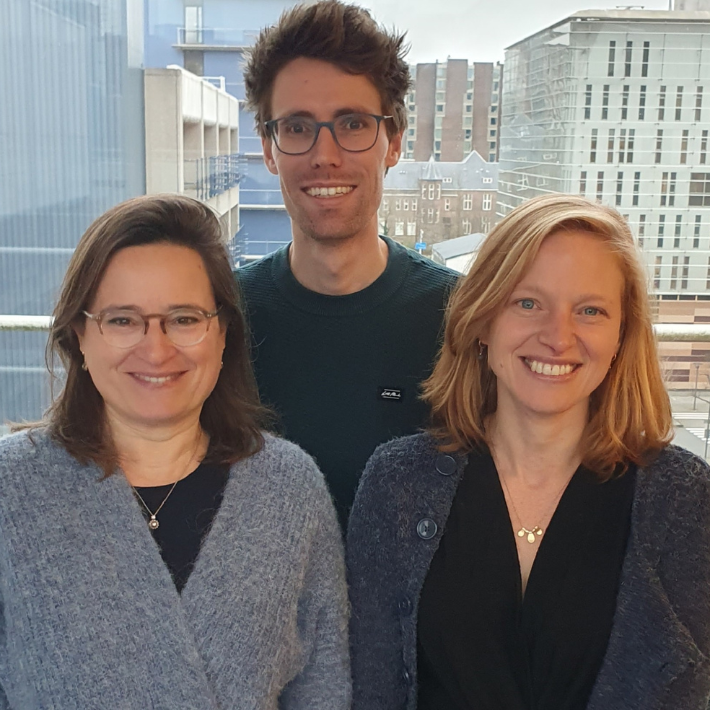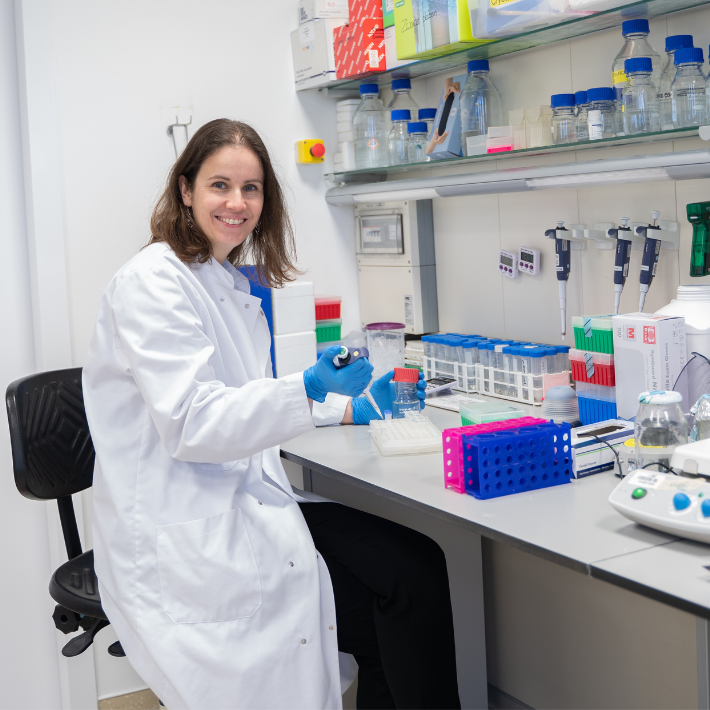Promising results for the treatment of tenosynovial giant cell tumors
&width=710&height=710)
Tenosynovial giant cell tumor
A tenosynovial giant cell tumor is very rare. The tumor consists of enormously large cells, hence the name giant cell tumor. A giant cell tumor is a benign tumor and therefore not cancerous. There are two types of tenosynovial giant cell tumors: a localized and a diffuse form. The localized form occurs mainly in the fingers and can be seen on the MRI as a sharply defined little ball. In the diffuse form, the tumor is spread throughout the joint and may even affect the entire joint.
Every year, 40 people in the Netherlands are diagnosed with the diffuse form. The diffuse tumor occurs mainly in young people (30-50 years) and is located mainly in the knee. Patients experience pain, stiffness, swelling of the joint and have decreased mobility. Usually, the symptoms develop slowly and because of the type of symptoms, it can take quite some time before the correct diagnosis is made. "The number of patients is probably higher than we think because, on the one hand, people wait longer before seeing a doctor about their complaints and, on the other hand, because of the atypical symptoms," says Prof. Hans Gelderblom, internist-oncologist and head of the Department of Medical Oncology at the LUMC.
Treatment
The tumor can be disabling and causes a lot of damage within the joint, making treatment necessary. Removal of the tumor and the affected tissue used to be the preferred treatment. In extreme cases the joint had to be replaced. Surgery is usually followed by a long rehabilitation process. Gelderblom: "Unfortunately, there is a high risk that the tumor will grow back, which means that patients sometimes need multiple operations over time. In the process of 'Shared Decision Making,' we discuss the benefits and drawbacks of surgery together with the patient and more often we decide against surgery. For these patients, we started the MOTION study."
MOTION study
Tenosynovial giant cell tumors produce a lot of CSF-1 (colony stimulating factor). CSF-1 is a substance that, among other things, attracts inflammatory cells like a magnet towards the tumor. Once arrived, the inflammatory cells help the tumor grow in various ways. For example, they suppress the immune system locally and promote the production of blood vessels that supply the tumor with nutrients. Gelderblom: "We intervene in this process with the drug vimseltinib. Vimseltinib in fact blocks the receptor for CSF-1, thereby preventing the recruitment of inflammatory cells towards the tumor."
35 hospitals across 13 countries participated in the MOTION study. For 24 weeks, patients took a pill twice a week. The patients were divided into two groups with one group receiving vimseltinib and the other group receiving a control pill with no active substance. The results were promising. 95% of the patients had smaller tumors after treatment with vimseltinib. Gelderblom: "Obviously that is a very nice result. But more importantly, the quality of life increased in these often relatively young patients. The treated patients had less pain, stiffness and swelling and experienced increased mobility."
Next steps
Vimseltinib is an experimental drug. That means that for the time being it may only be administered in study settings such as the MOTION study. The results of the MOTION study will be used to get the drug approved for the treatment of tenosynovial giant cell tumor by the European (EMA) and U.S. (FDA) drug agencies. This is a lengthy process so it may be several years before the drug is generally available on the Dutch market.
In the meantime, several other studies investigating the effect of CSF-1 receptor inhibitors are in progress at the LUMC. "For example, we are currently researching the effect of local injections into the knee and intravenous treatment. In the future, we will investigate whether treatment with CSF-1 receptor inhibitors before surgery can reduce the risk of tumor recurrence and we will research whether periods of treatment can be alternated with periods of rest," Gelderblom said.
Collaboration
The LUMC is the world's largest center of expertise in the field of tenosynovial giant cell tumors, enabling the LUMC to conduct a great deal of research into these tumors.
"The publication in The Lancet is the icing on the cake but it could only come about through intensive collaboration. Cooperation within the LUMC between the bone and soft tissue tumors research group and the departments of orthopedics, physiotherapy, pathology and radiology and cooperation with the other centers of expertise across the world."
More information on tenosynovial giant cell tumors can be found here. The information on the LUMC website is only available in Dutch.
&width=710&height=710)
&width=710&height=710)
&width=710&height=710)
&width=710&height=710)